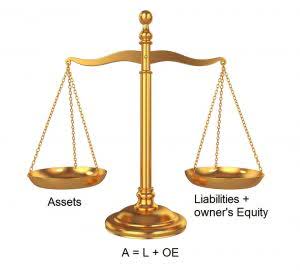
Any variation of this process will alter the company’s financial reports. A steady cash flow is essential for a business as it attracts investors and helps strengthen their trust in the company. Investments come in only when your cash flow statements look happy. As easy as it may sound, maintaining an unshakeable cash flow is difficult. Therefore, businesses use the technique of hedging the cash flow by creating forward contracts with their suppliers. Investors and business owners who encounter the fluctuations pertaining to price changes, shifting currency values, and inflation are the ones who find support in hedging and hedge accounting.
Net Investment Hedge
Hedge accounting standards, such as IFRS 9 and ASC 815 are intricate and complex. Imagine that your company has just issued debt with a variable interest rate, and is concerned about that interest rate potentially increasing in the future, which would increase its repayment obligations. If the fair value of the raw material inventory decreases to $80,000 as anticipated, the value of the futures contract will increase, offsetting the decrease in the inventory’s value. Conversely, if the fair value of the inventory remains at $100,000 or increases, the value of the futures contract will decrease accordingly, but Company A will still benefit from Partnership Accounting the stable value of its inventory.

Implementing hedge accounting with BILL
This type of hedge accounting is used to minimize the chances of fluctuations in reported earnings that could arise from the future sale of a net investment in a foreign operation. Hedge accounting is a practice in accounting where the value of a derivative is adjusted according to its fair value of the hedged derivative. In simpler terms, cash flow hedge accounting helps in identifying the gains and losses for the derivatives that are hedge by adjusting or modifying their normal basis. Some entities mitigate certain risks by entering into separate contracts that meet the definition of a derivative instrument. For such circumstances, ASC 815 allows entities to use a specialized hedge accounting for qualified hedging relationships. The hedged item is an item (in its entirety or a component of an item) that is exposed to the specific risk(s) that a company has chosen to hedge based on its risk management activities.
Cash flow hedges
- ASC 815 sets out guidelines for recognizing, measuring, and disclosing hedge activities, allowing companies to apply hedge accounting to mitigate risks.
- There are a lot of things that need to be looked at while the company attempts hedging.
- Hedge accounting really aims to reduce the issues caused by fair value accounting.
- Investments and their corresponding hedges need to be listed in a credit-debit system like income and expenses.
- To hedge themselves, they use financial instruments, such as forward contracts, options, or futures.
- All of the criteria listed below are required for hedge accounting.
Together, these two items are examined, and a single entry is recorded for the total profit or loss. An accountant who carries out hedging will report a future foreign exchange transaction on the balance sheet as an asset that would be accounts receivable. By calculating the value of that hedge, we can estimate how much the foreign exchange transaction will cost. When a company decides to buy a currency, it will purchase a futures contract rather than a put option. This will allow them to buy the currency exactly on the price on the date when they need it.
- The accounting process involves adjusting an instrument’s value to fair value, which typically culminates in significant changes in profit and loss.
- The effectiveness of such hedges can influence a company’s consolidated financial statements by stabilizing the currency translation adjustments.
- General business risks cannot be hedged items as they cannot be specifically identified and measured (IFRS 9.B6.3.1).
- This content is for general information purposes only, and should not be used as a substitute for consultation with professional advisors.
- Hedge accounting is a technique used by companies to reduce the effects of foreign currency fluctuations or any other financial risks on their accounts.
- Profits and losses are therefore less likely to fluctuate dramatically.
Risk & Financial Advisory
To qualify for hedge accounting, the hedged item needs to be reliably measurable. While IFRS 9 doesn’t dictate how to measure hedge ineffectiveness, ratio analysis can be used in simpler arrangements. This method involves comparing hedging gains and losses with the corresponding gains and losses on the hedged item at a specific point in time, as explicitly mentioned in IAS 39.F.4.4. A firm commitment to acquire a business in a business combination cannot be a hedged item, hedge accounting except for foreign currency risk.
- As such, business owners try to shield themselves from those risks as best they can.
- Although we endeavor to provide accurate and timely information, there can be no guarantee that such information is accurate as of the date it is received or that it will continue to be accurate in the future.
- KPMG has market-leading alliances with many of the world’s leading software and services vendors.
- Hedge ineffectiveness refers to the degree to which changes in the fair value or cash flows of the hedging instrument exceed or fall short of those of the hedged item.
- In this blog, we will understand what is hedge accounting, its types, advantages, and related complexities.
- Fair value hedges tend to move in the opposite direction of the hedged item.
In this blog, we will understand what is hedge accounting, its types, advantages, and related complexities. Hedge accounting matches the timing of income statement recognition of the hedging instrument with that of the hedged risk. Maintaining steady cash flow instills confidence in investors and raises the credit rating of a business. This is not easy to do when revenue is unpredictable, so businesses often hedge cash flow by setting up forward contracts with customers and suppliers. This locks in pricing and allows the accountant to count the contract as an asset on the balance sheet. Deloitte’s Roadmap Hedge Accounting provides an overview of the FASB’s authoritative guidance on hedge accounting as well as our insights into and interpretations of how to apply that guidance in practice.

Hedge Accounting and IFRS 9

For large corporations with centralised treasury functions, it’s common for one entity to contract a derivative to hedge a risk to which another group entity is exposed. IFRS 9 does not prohibit such arrangements from being accounted for using hedge accounting principles in consolidated financial statements. Where a hedge relationship is effective (meets the 80%–125% rule), most of the mark-to-market derivative volatility will be offset in the profit and loss account. contribution margin Hedge accounting entails much compliance – involving documenting the hedge relationship and both prospectively and retrospectively proving that the hedge relationship is effective. Only contracts with a party external to the reporting entity can be designated as hedging instruments.

Risks other than foreign currency risk cannot be specifically identified and measured and are considered to be general business risks (IFRS 9.B6.3.1). Gains and losses of the hedging instruments are aligned with the recognition of the hedged item’s gains and losses. In this case, Company A is employing a fair value hedging strategy to reduce its exposure to changes in the fair value of its inventory by using a futures contract.
Helps Recede the Risks
Hedge accounting plays a role in financial management by aligning the timing of gains and losses on hedging instruments with those of the underlying exposures they are intended to offset. This approach helps companies manage risk more effectively, offering a clearer picture of their financial health. Many financial institutions and corporate businesses (entities) use derivative financial instruments to hedge their exposure to different risks (for example interest rate risk, foreign exchange risk, commodity risk, etc.). ‘Hedge effectiveness’ is the extent to which changes in the fair value or cash flows of the hedging instrument offset changes in the fair value or cash flows of the hedged item for the hedged risk. For a fair value hedge, the offset is achieved either by marking-to-market an asset or a liability which offsets the P&L movement of the derivative.

